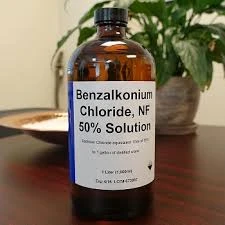Applications and Benefits of Polyacrylamide in Various Industries and Research Fields
Exploring Polyacrylamide A Versatile Polymer with Diverse Applications
Polyacrylamide (PAM) is a synthetic polymer that has garnered significant attention in various fields due to its unique properties and versatility. Created by the polymerization of acrylamide, this compound consists of a long chain of repeating acrylamide units, leading to a variety of forms such as non-ionic, anionic, and cationic polyacrylamide. Its adaptability makes it suitable for a wide range of applications, from industrial processes to environmental restoration.
Properties of Polyacrylamide
One of the key attributes of polyacrylamide is its excellent water solubility. This property allows PAM to form gels, which are beneficial in numerous applications, particularly in the fields of wastewater treatment, paper manufacturing, and oil recovery. Depending on its ionic nature, PAM can enhance the flocculation process - the clumping of particles together - facilitating the removal of suspended solids in liquids. This makes it invaluable in environments where clear water is essential, such as in municipal wastewater treatment facilities.
Additionally, polyacrylamide exhibits good thermal stability and mechanical strength, making it a preferred choice in varied temperature conditions. Its ability to modify viscosity also enhances its use in various industrial processes. For example, in the oil industry, PAM is utilized in hydraulic fracturing fluids to increase the viscosity of water, ensuring a more effective extraction of oil and natural gas.
Applications in Agriculture
In agriculture, polyacrylamide serves as a soil conditioner. When applied to soil, it can improve water retention, reduce erosion, and enhance nutrient absorption by plants. This attribute is particularly beneficial in arid regions, where water conservation is critical. By capturing moisture in the soil, PAM contributes to sustainable farming practices, aiding farmers in optimizing their yield and resource use while minimizing environmental impact.
polyacrylamide p3

Environmental Benefits
The environmental applications of polyacrylamide are extensive. In addition to its use in wastewater treatment, it plays a vital role in mitigating soil contamination and in the restoration of polluted environments. PAM can bind to heavy metals and other toxic substances within sediments, making it easier to manage hazardous waste sites. By trapping these contaminants, polyacrylamide aids in minimizing their spread and reducing ecological damage.
Furthermore, PAM’s biodegradable options are being researched, which could pave the way for greener alternatives in its applications. This aspect is particularly important considering the increasing global emphasis on sustainability and environmental protection.
Health and Safety Considerations
Despite its many benefits, it is crucial to handle polyacrylamide with care due to its potential health risks. Acrylamide, the monomer from which PAM is derived, is a neurotoxin and carcinogen. Therefore, proper safety protocols must be established when storing and using PAM products, especially in large-scale applications. Regulations are in place in many countries to ensure that exposure levels remain within safe limits, and ongoing research continues to evaluate its environmental and health effects.
Conclusion
Polyacrylamide stands out as a remarkable polymer with a plethora of applications across various sectors, from industrial processes to agriculture and environmental management. Its unique properties—notably its solubility, viscosity modification, and flocculation capabilities—position it as an essential tool in addressing contemporary challenges. As research advances and the focus on safety and sustainability grows, polyacrylamide will likely continue to play a crucial role in innovation and environmental stewardship. Through responsible utilization and ongoing investigation, PAM can contribute significantly to enhancing our industrial practices while promoting a healthier planet.
-
Water Treatment with Flocculant Water TreatmentNewsJun.12,2025
-
Polymaleic AnhydrideNewsJun.12,2025
-
Polyaspartic AcidNewsJun.12,2025
-
Enhance Industrial Processes with IsothiazolinonesNewsJun.12,2025
-
Enhance Industrial Processes with PBTCA SolutionsNewsJun.12,2025
-
Dodecyldimethylbenzylammonium Chloride SolutionsNewsJun.12,2025





